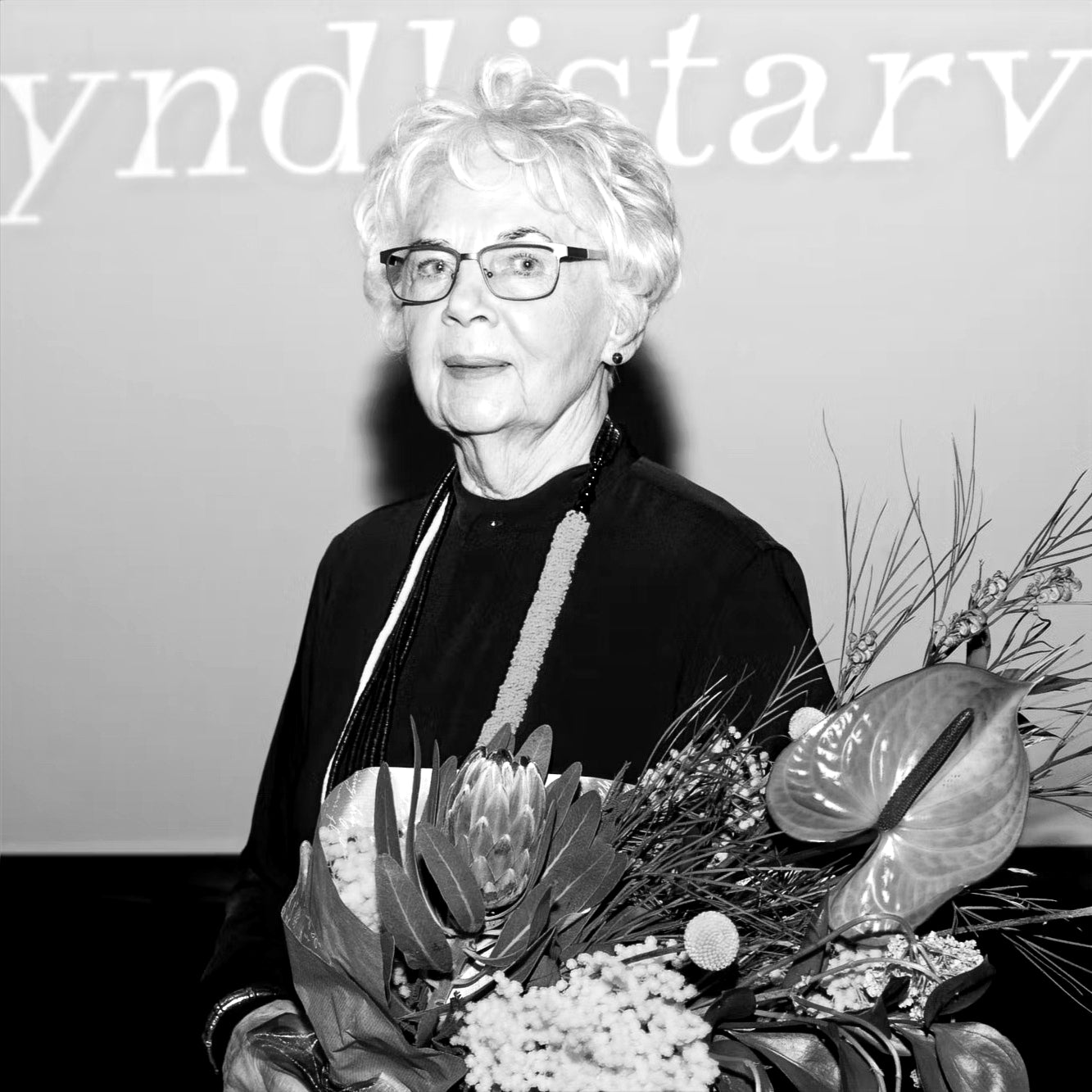Ragnheiður Jónsdóttir
Ragnheiður Jónsdóttir (b.1933), has made a great mark on Icelandic art history
with her effective use of the drawing medium, first in printmaking and
then later with her particularly magnificent and powerful drawings. She
was in her thirties when she first started to make a name for herself in
the art scene. Her first solo exhibition was held in 1968 and her
career has continued consistently since then.
In her art prints, Jónsdóttir used a wide variety of drawing and surface
treatments to create unique and often surprising imagery. Her works have
a strong sense of chiaroscuro, creating a distinct theatrical space,
provoking a sense of mystique. Her works at this time were serial, many
works based on a strong, central theme, where she created a strong and
unusual atmosphere. One of the characteristics of these works was a
strong personification of everyday items, giving them an inner strength,
as they were able to act and influence their surroundings. Although her
works from this time were not ostensibly political in nature, it is
clear that Jónsdóttir was a leading figure in addressing many of the
period’s most pressing issues. Her works from the middle of the 1970s,
focusing on the rights and position of women in society, later were to
became iconic images for the second wave of feminism in Iceland. At the
same time, Jónsdóttir did works that addressed humanity’s terrible
effects on the ecosystem and the environment.
In the latter half of her career, from the start of the 1980s until today,
Jónsdóttir has broken new ground in her treatment of the drawing. Here,
her medium of choice is charcoal on paper, more often than not on a
large scale, so that the image encompasses the viewer’s visual field. In
these images, Jónsdóttir has developed her drawing in a novel way. The
focus is on a simpler composition than in her graphic works. Here, she
uses the media to create fluid formal repetitions that create strong,
simple imagery; the main thing is the overall view, single parts
dissolve and merge with one another. In these works, the artist becomes a
tool, working on the basis of natural development and processes. The
artwork is created on the premises of the process of drawing itself.


